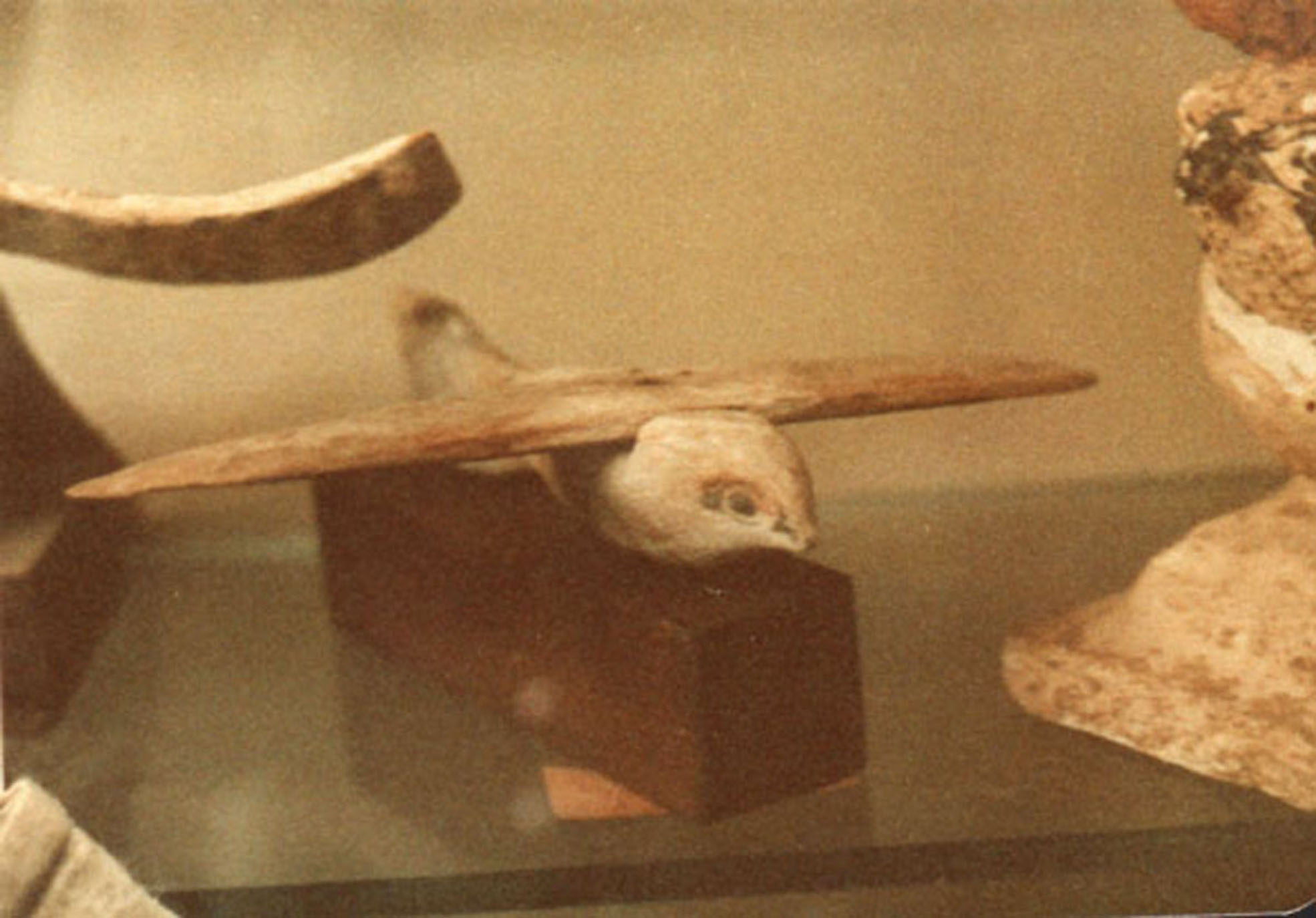Ancient Flight
Ancient Tolima Quimbaya Airplanes?
Some years ago in Columbia, many small ancient gold artifacts believed to be related to the Quimbaya Civilization of 1000 C.E. were found. Of the hundreds of gold artifacts depicting what appears to be various animals, there were about 12 artifacts that looked surprisingly like modern day aircraft.
Some skeptics argue that these plane-like figurines are actually depicting certain types of fish, which are obviously naturally hydrodynamic. This is a plausible possibility, but what is striking about these figurines are the large vertical tails that are triangular on the top side and have no reciprocating symmetry on the bottom like the tails of most fish. A plane with a proportionally large vertical tail would inherently have exceptional stability, especially when considering the other aerodynamic aspects of the figurines. Additionally, the these figurines are horizontal tail wings with a symmetry very similar to modern planes. And then there are the proportionally large delta wings that don’t fit any known fish.

(Artifact image owner: Museo Del Oro, Bogota, Columbia)
In 1994, Germans Peter Belting and Conrad Lubbers created large scaled working remote radio controlled versions of two of these figurines, each with a different propulsion design, and they flew remarkably well. If these figurines were depicting fish, the fish’s hydro-dynamical features could allow for flight with enough propulsive force.
Here is a free video from Mr. Herbert Science Class in which he also created working scaled remote controlled airplanes, including the holes in the wing (goto 5:35 min).
References
“Quimbaya Artifacts“, https://en.wikipedia.org/wiki/Quimbaya_artifacts, Retrieved April 2015
“Quimbaya Civilization“, https://en.wikipedia.org/wiki/Quimbaya_civilization , Retrieved April 2015
Museum of Gold, Bogota, Columbia http://www.banrepcultural.org/museo-del-oro
“The Revolutionary Quimbaya Airplanes“, http://ancientufo.org/2015/11/the-revolutionary-quimbaya-airplanes/ , Retrieved April 2015
“Quimbaya (Tolima) Airplanes“, http://www.theancientaliens.com/#!technology–quimbaya-airplanes/ciu4 , Retrieved April 2015
Saqqara Bird (Ancient Model Plane?)
The Saqqara Bird is a bird shaped artifact made of sycamore wood, discovered during the 1898 excavation of the Pa-di-Imen tomb in Saqqara, Egypt. It is dates to about 200 BC. It’s current home is in the Museum of Egyptian Antiquities in Cairo.
The Saqqara Bird has a wingspan of 180 mm (7.1 in) and weighs 39.12 g (1.380 oz). Its function is not understood because of a lack of period documentation.
The anomalous problem is that the structure of the wooden bird has elements very similar to modern aircraft. It is very aerodynamic, the wings have curvatures allowing lift dynamic, and the tail in particular is vertical, and definitely not similar to bird’s tail. The tail resembles the tail rudder of modern airplanes. Also there is evidence that the tail is missing a horizontal piece, making it even more similar to modern planes.

(Image ownership: https://commons.wikimedia.org/wiki/File:Photo_1-plane_front_view1.jpg)
References